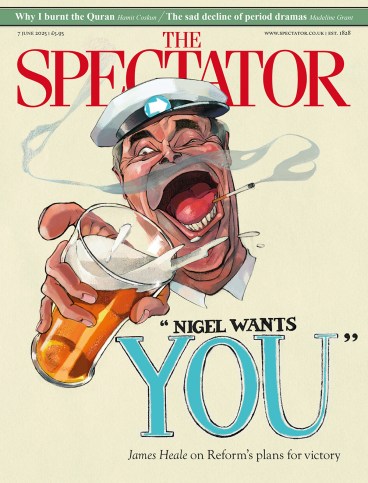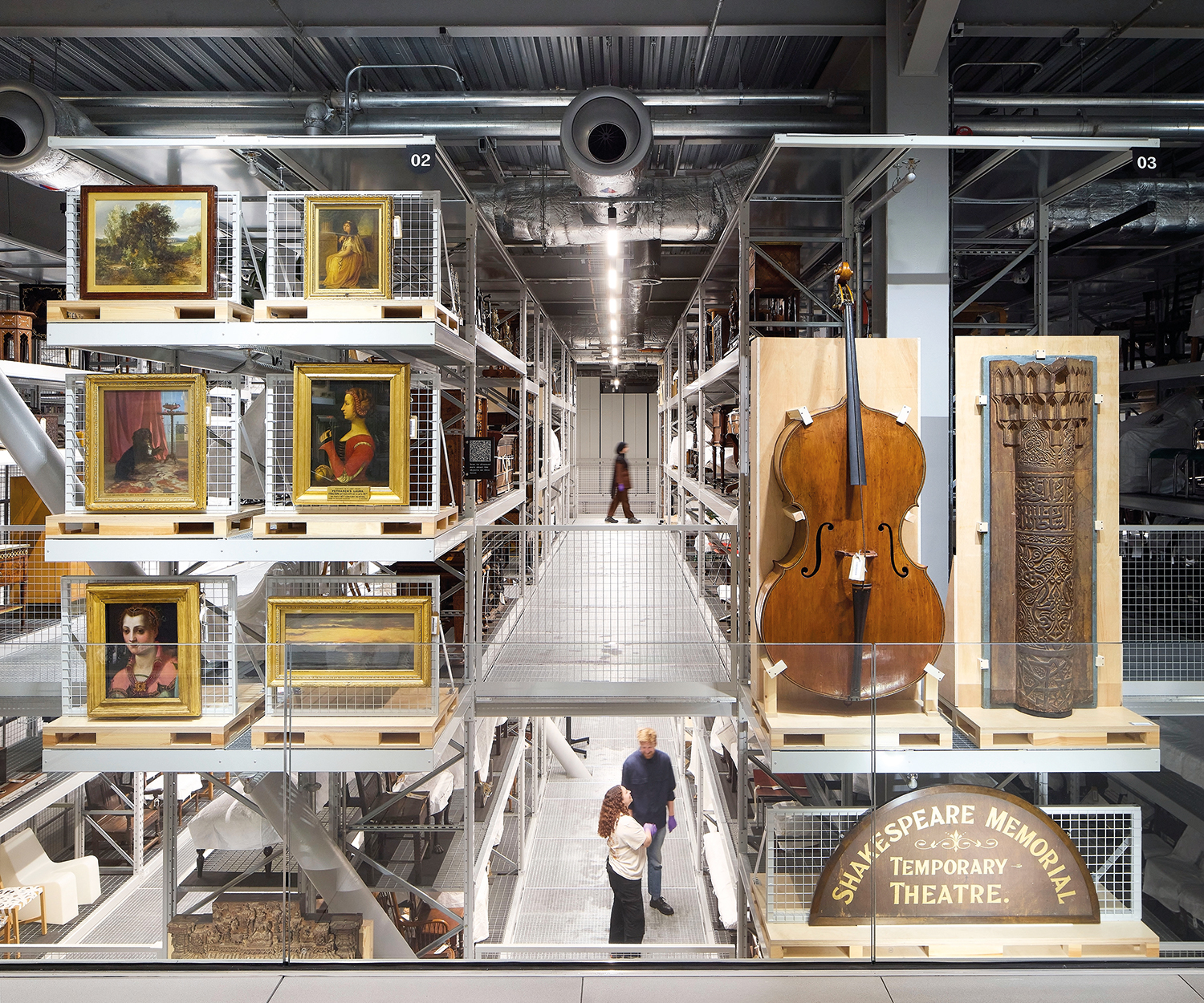
Calvin Po has narrated this article for you to listen to.
In last week’s Spectator, Richard Morris lamented museum collections languishing in storage, pleading to ‘get these works out’. There’s an alternative solution: bring the public in. V&A East Storehouse, which opened last weekend, was designed by New York architects Diller Scofidio + Renfro to do just that.
The museum’s collections were previously holed up in the creaking, late-Victorian Blythe House. The government decided to sell it in 2015, leading the V&A to find a new home in the Olympics’s former Broadcasting Centre in Hackney Wick, a big box since rebadged as Here East, an ‘innovation campus’. The Storehouse’s entrance indeed blends in with the startups and students sharing the building. With its techy-twee café and plywood-clad reception, it could be yet another co-working space. Yet a glimpse through the glass soon suggests otherwise.
After passing through an airlock, I enter a tunnel-like walkway, lined with shelves of objects: a bust of Christ, a carved teak shrine from Ahmedabad, and a chair by Marcel Breuer. In the absence of any curatorial logic, the objects are placed according to their storage requirements, and mounted on to pallets with bespoke fixings that carefully hold the objects in place for shipping. In one way the space is an overdue recognition of the once invisible labour of art handlers.
The Storehouse is utilitarian. But its sparing flourishes count, namely by welcoming visitors through the underbelly of the central hall. I emerge in the middle of a climactic triple-height space, encircled by walkways, crowned by a plane of light. Rows of ordinary warehouse shelving extend in all three dimensions, including below, via the glass floor. Their wire racks allow the eye to penetrate into the space’s deepest recesses, with a plethora of objects interspersed in this mesh of steel. Perhaps all museums wish to be a Wunderkammer. But on this rare occasion, the spatial drama and encyclopaedic overstimulation behind the concept of the cabinet of curiosities is actually achieved – and with such modest means.
A ‘world’s first’? Not quite. Others have arrived at this seemingly inevitable solution to museum storage. Boijmans Van Beuningen in Rotterdam opened their UFO-like Depot a few years ago. Yet the bulk of its storage remains behind glass. The Storehouse architects, by contrast, wanted no such ‘prophylactic’. As a result, ventilation systems have to work overtime to remove the moist exhalations of visitors, which could damage the collections.
On this occasion the concept of the cabinet of curiosities is achieved – and with such modest means
There’s a neat choreography to the division of public and private areas. The ground level is the off-limits warehouse floor, a working facility where the toing and froing of V&A staff can be glimpsed from above. Otherwise the presumption is permissive. Light-sensitive objects are shrouded only when needed. With objects an impulse away from being touched, there is a palpable sense of trust and mutual consent.
Refreshingly, the architects and curators mostly let objects speak for themselves. Curation is limited to a series of mini-displays at the ends of shelves. You can’t completely avoid the usual sermons about decolonisation and loot, but they are at least drowned out by other delights. The only major frustration is that there are no QR codes for finding out more about the uncurated items – only the curated ones. Fixing this would be easy and transformative.
The rows of shelving are broken up by a glass balcony overlooking the conservation studios, with a planned live-video feed of conservators explaining their work, and a display of the ‘world’s largest Picasso’, blown up in 1924 by assistants from the Ballets Russes. The cavernous black-box space that houses this front cloth has dramatic potential for more scenic paintings to be saved and shown.
Architectural fragments also now have a permanent home. A relic of Robin Hood Gardens, the now-demolished brutalist council block by Alison and Peter Smithson, is integrated into the walkways, tailored in width to match its ‘streets-in-the-sky’ (the idea that refuses to die). Far more tantalising is the opportunity – rare outside America – to witness Frank Lloyd Wright’s work. The V&A has reconstituted an office he designed between 1935 and ’37 for the Pittsburgh department store of Edgar J. Kaufmann. And be sure to inspect the interior and exterior of the sumptuously carved 15th-century ceiling saved from the Torrijos palace, near Toledo, especially the layers and layers of different timbers, spanning centuries, that hold it together.
The Storehouse is a defiant stand against all the vandals – and their soup and superglue attacks – who have ruined access for the rest of us. Its inaugural ‘Order an Object’ service, allowing anyone to request from the collection items for close viewing, for free, only cements this bureaucratic triumph over the bean-counters.








Comments